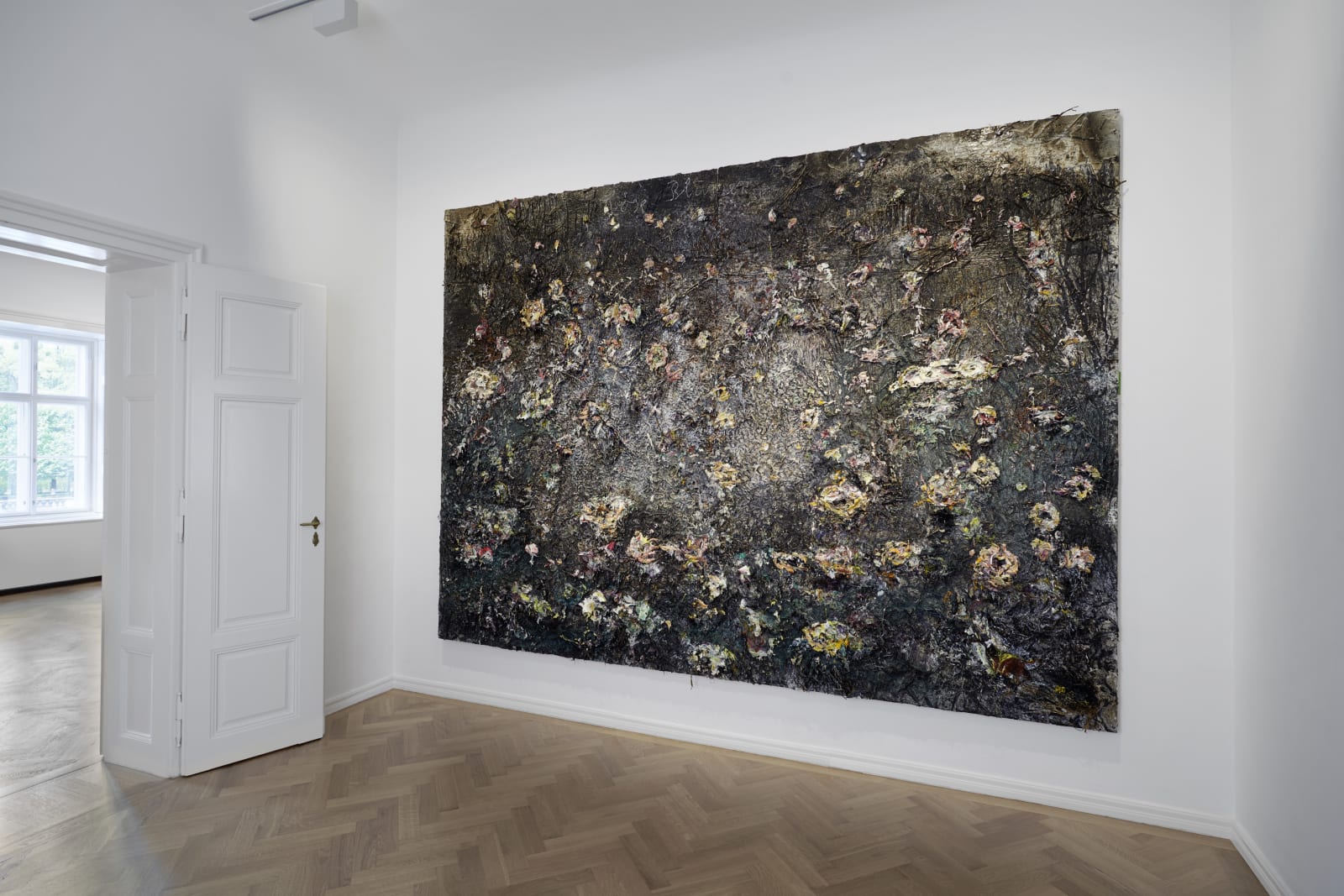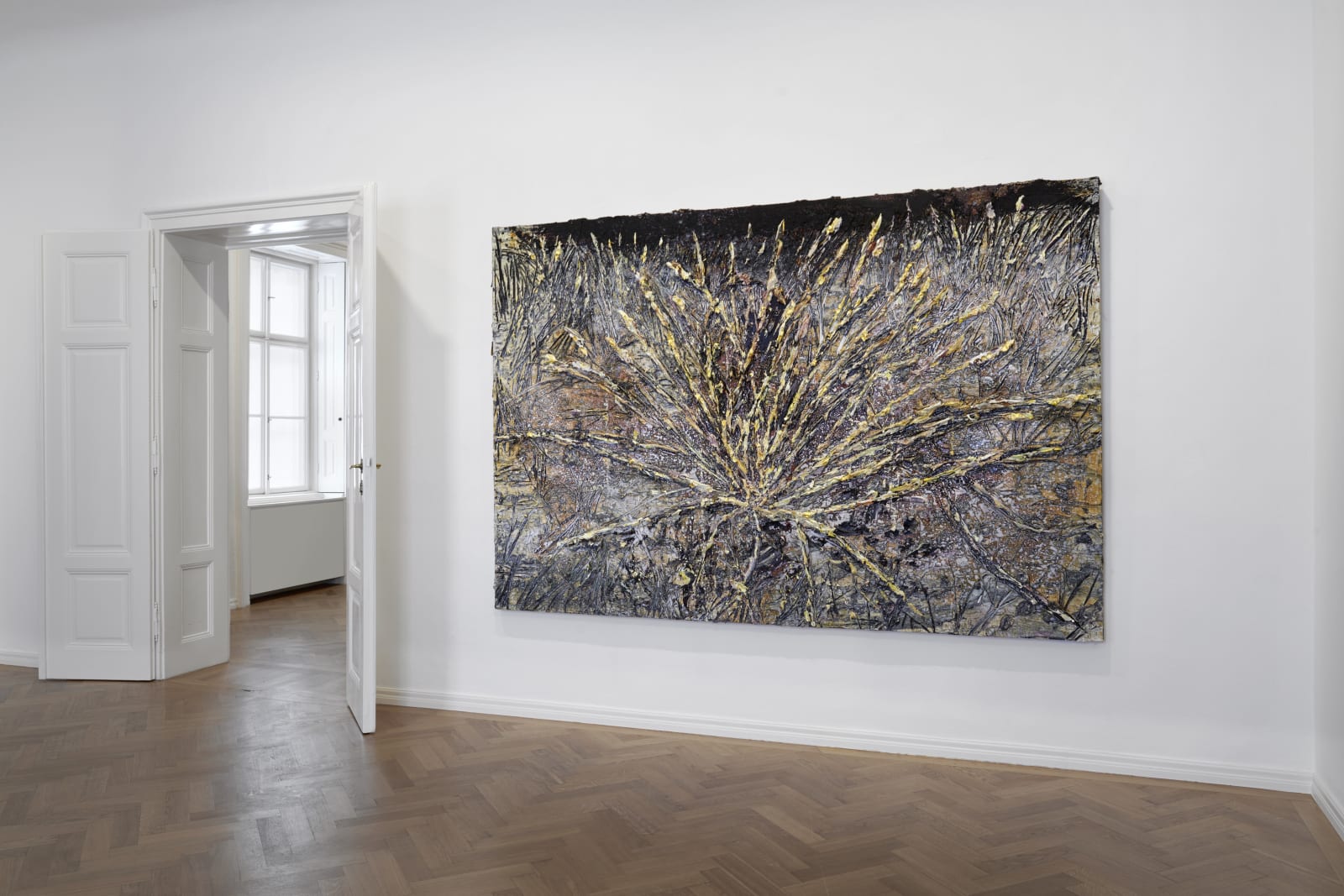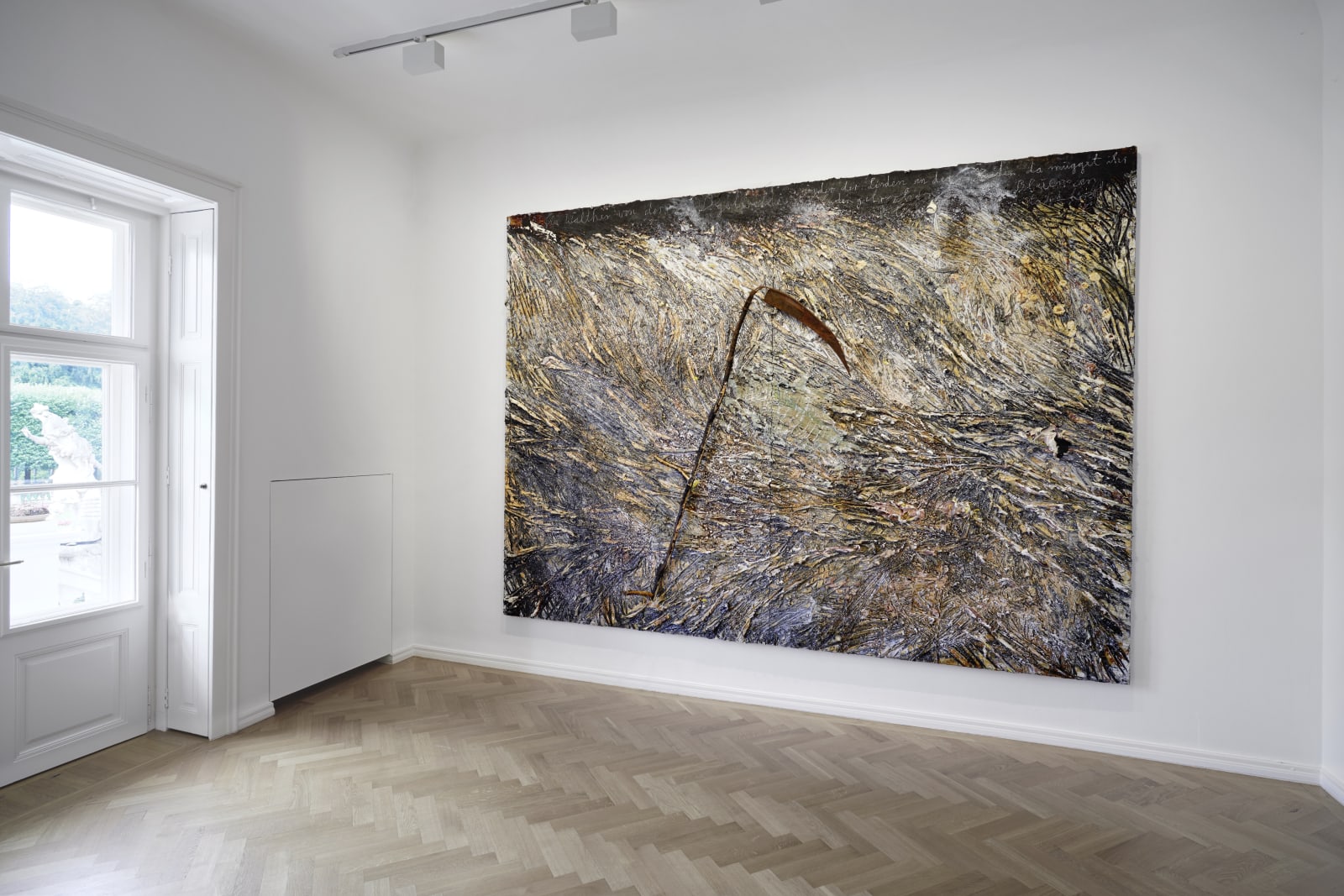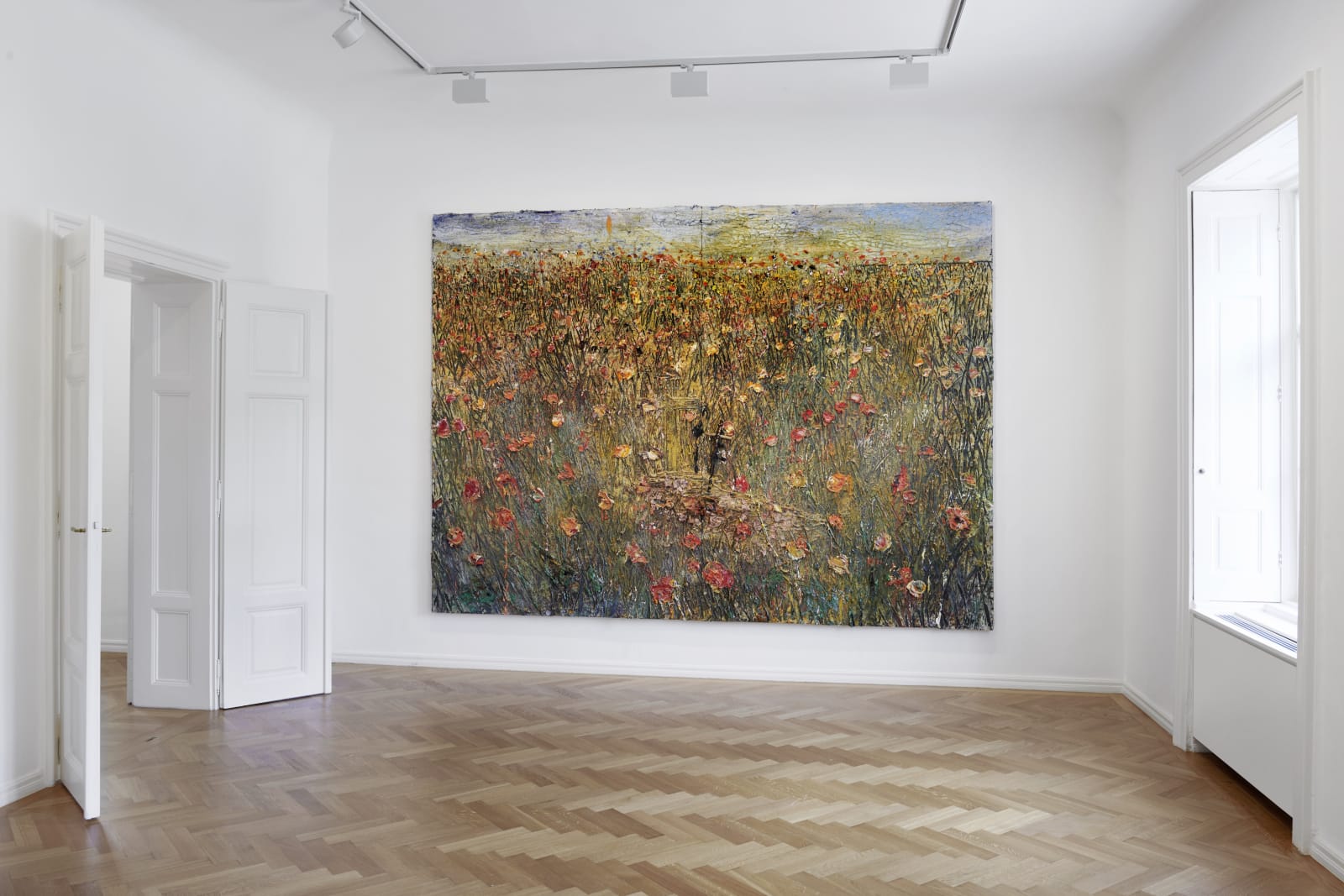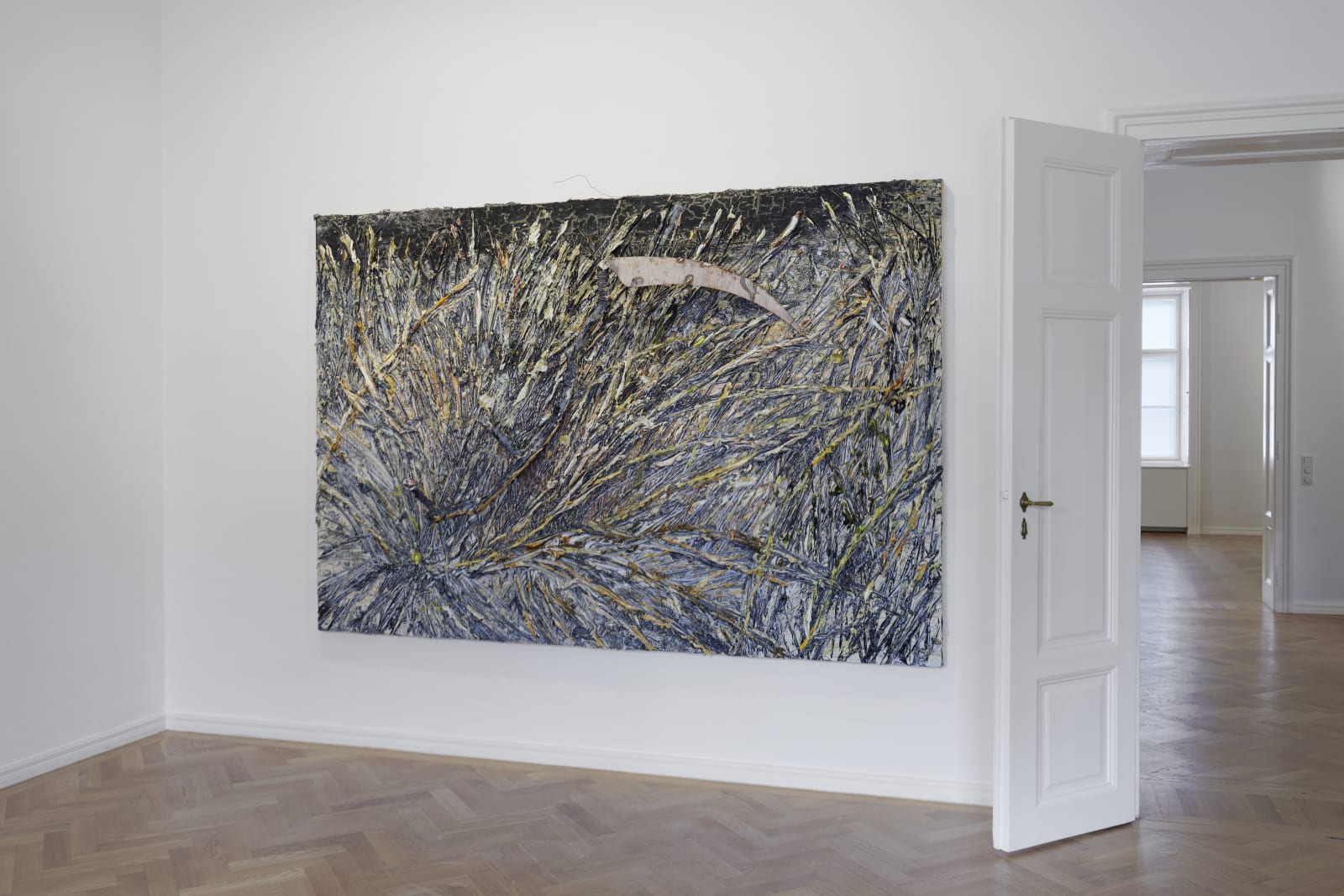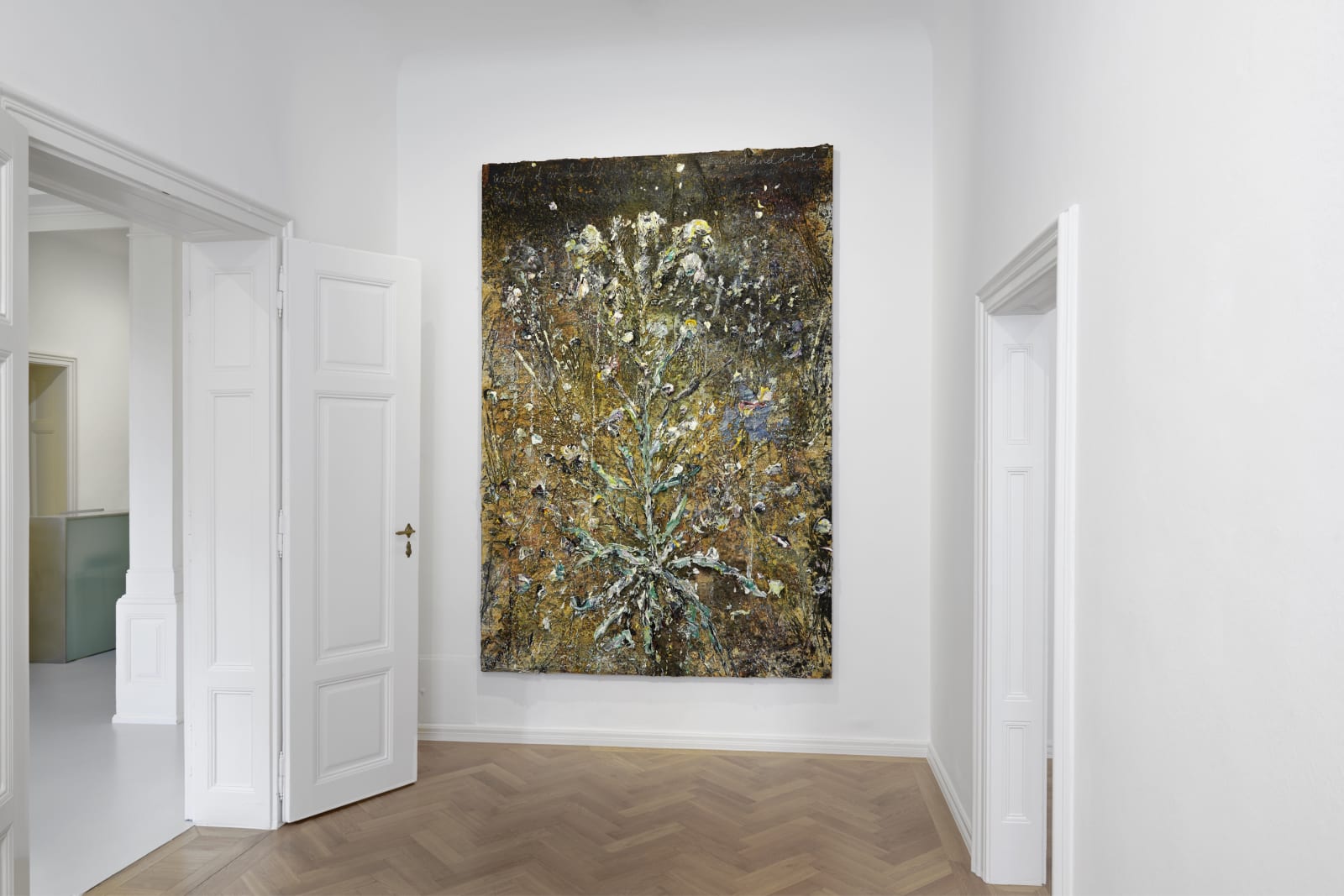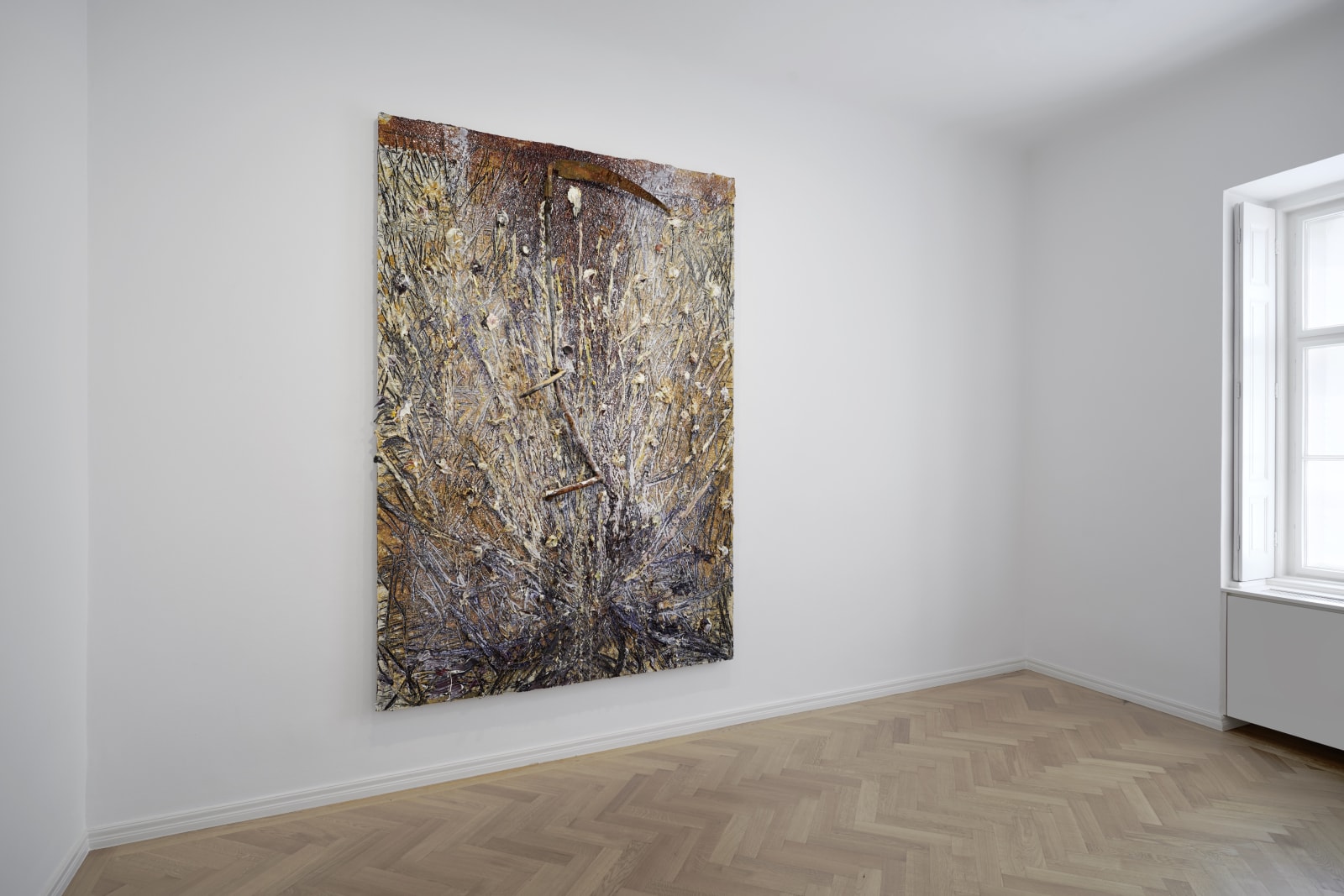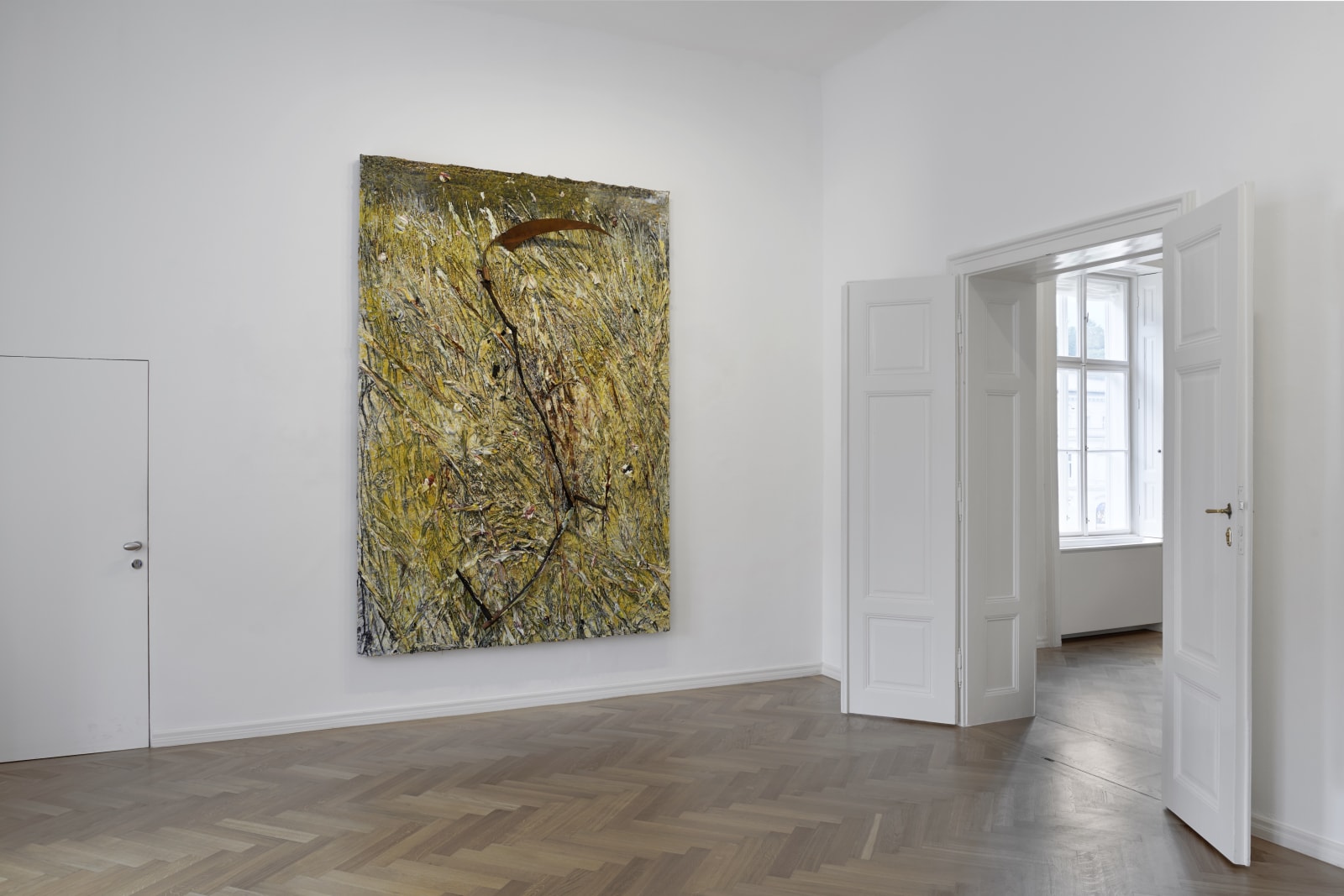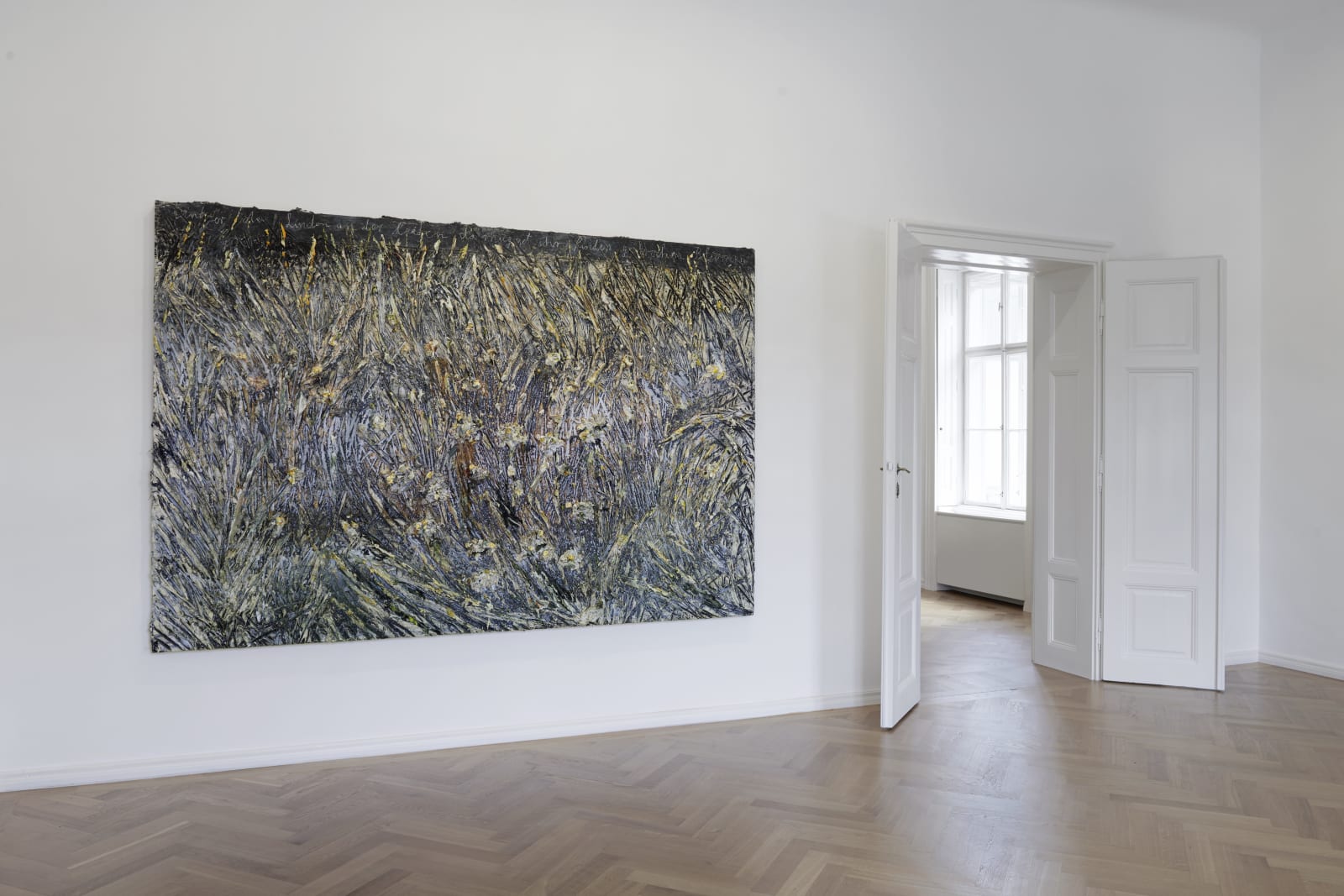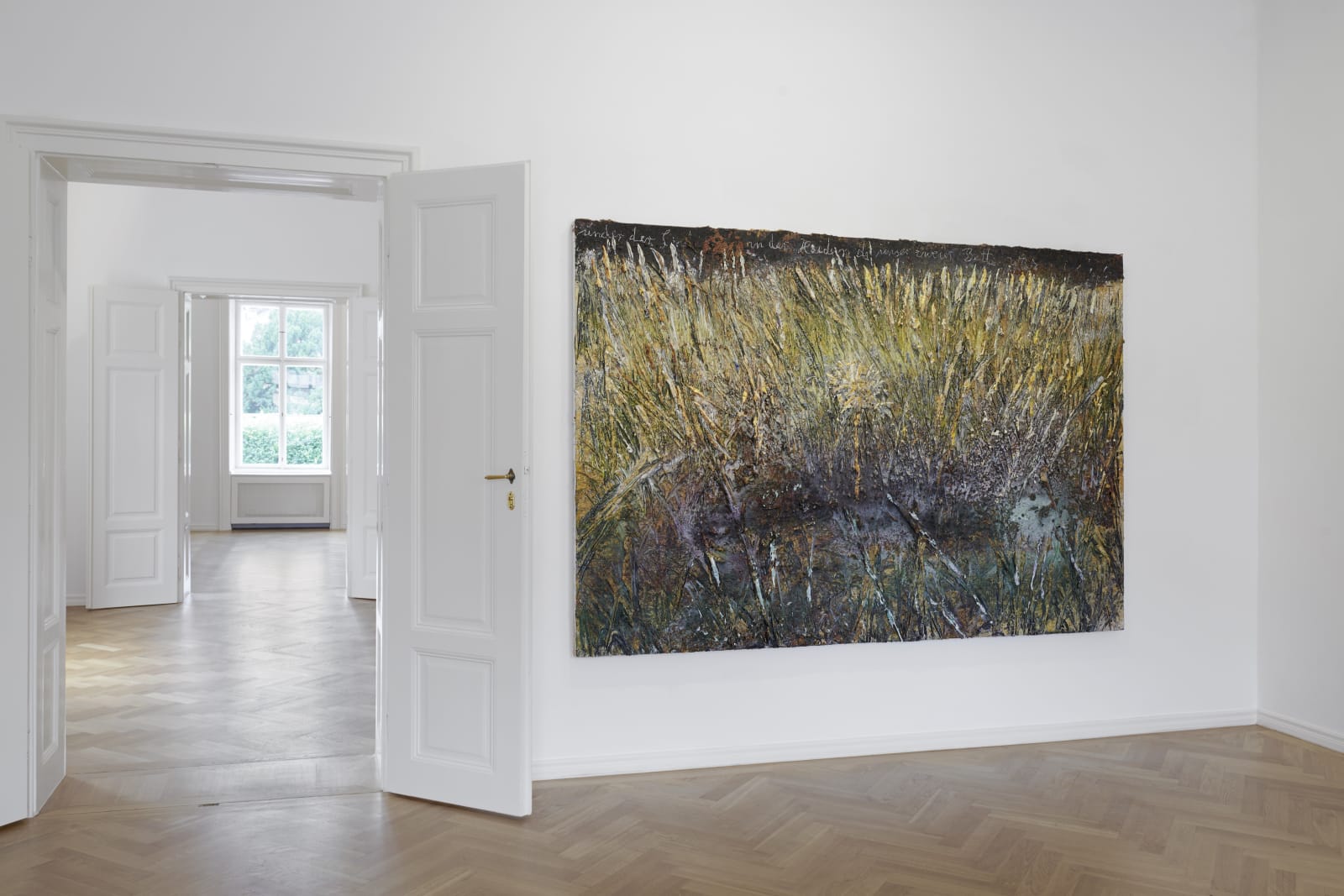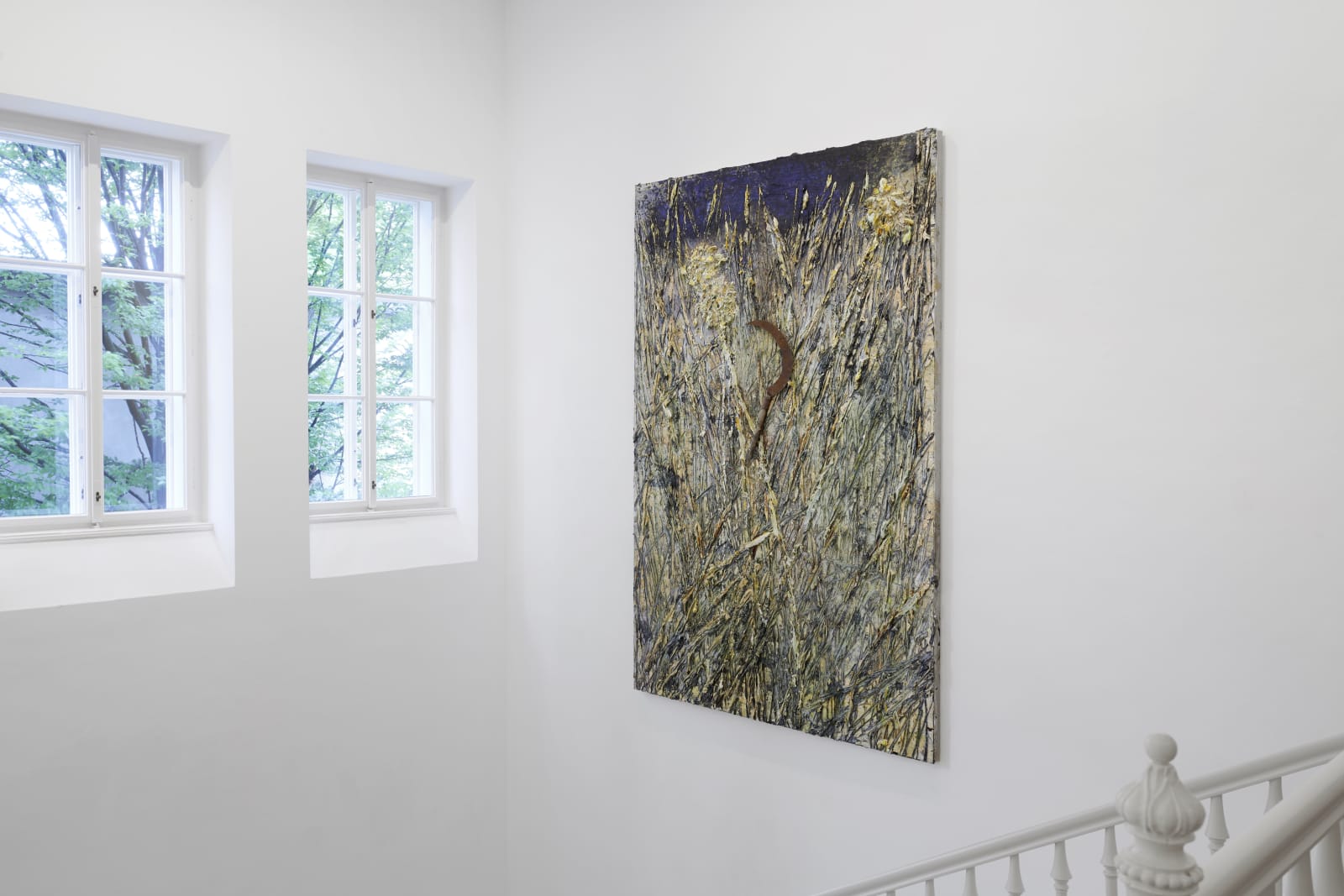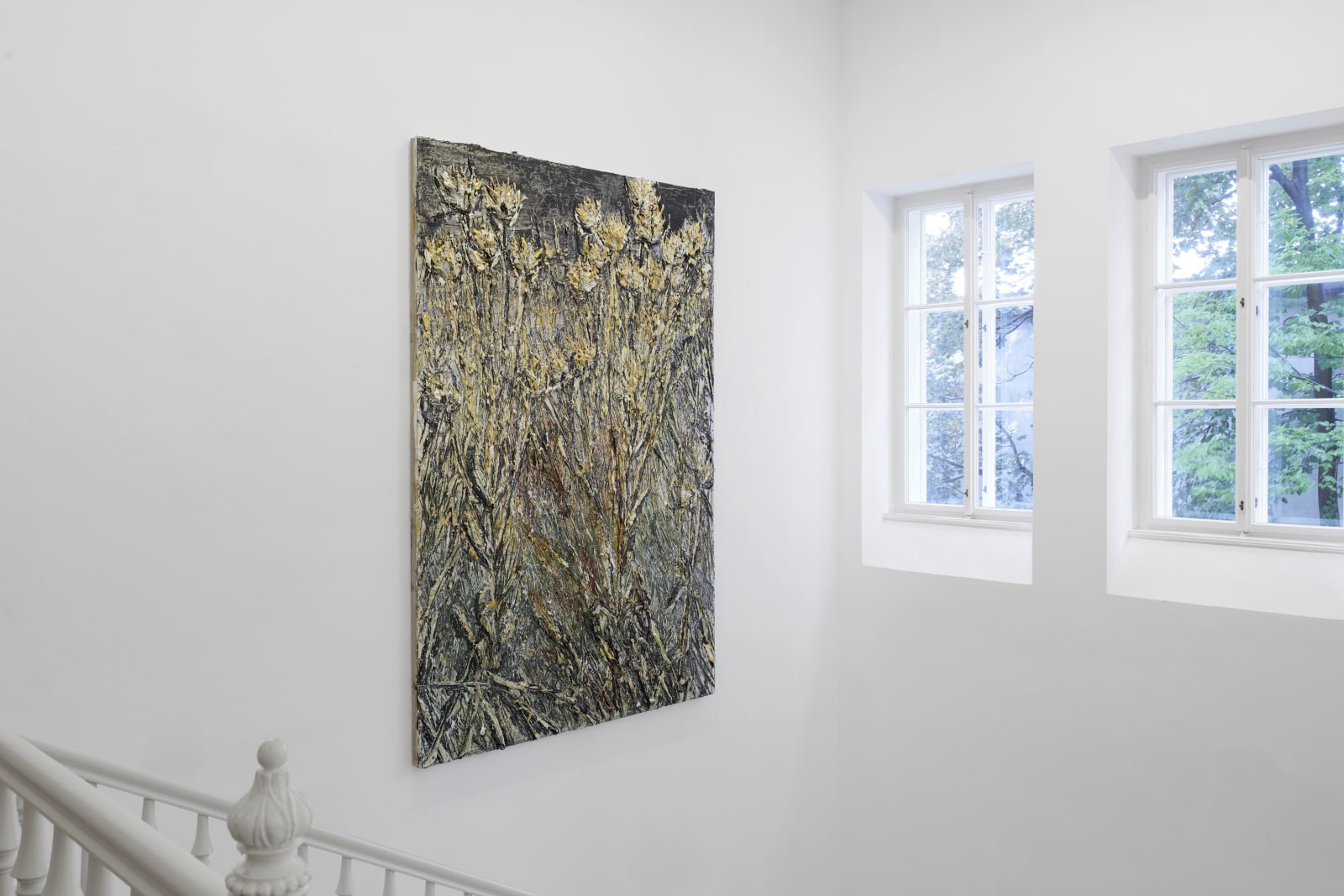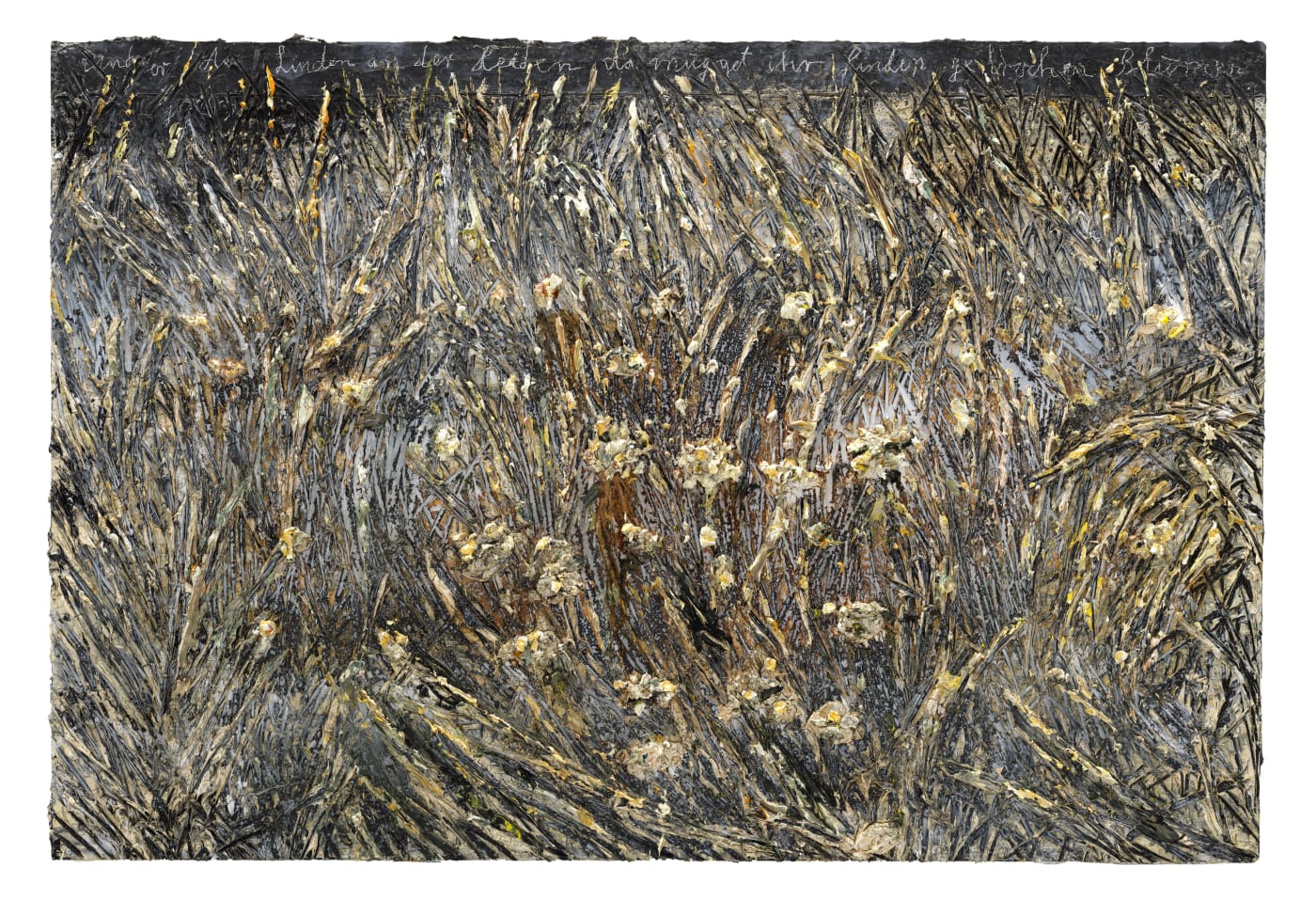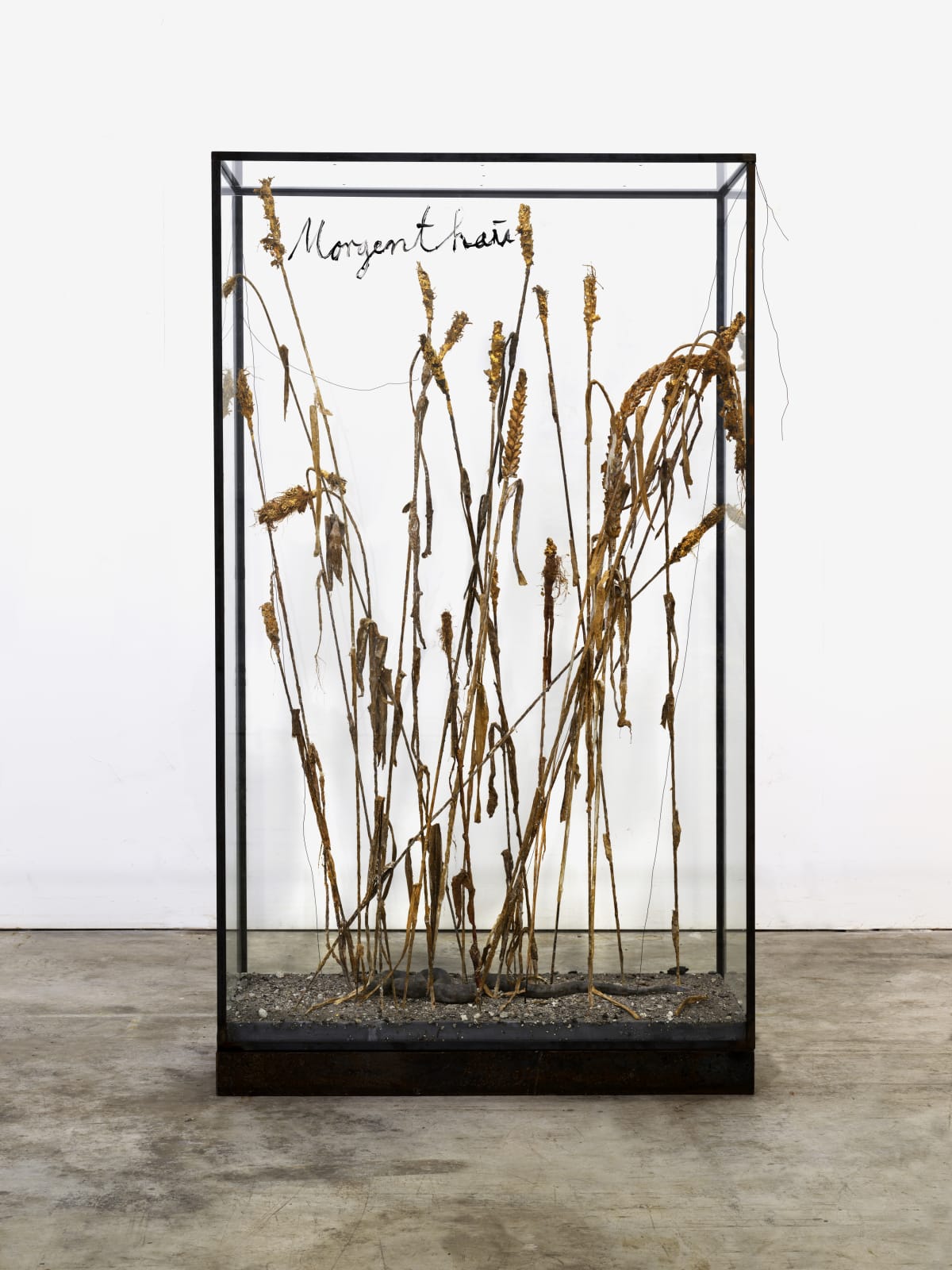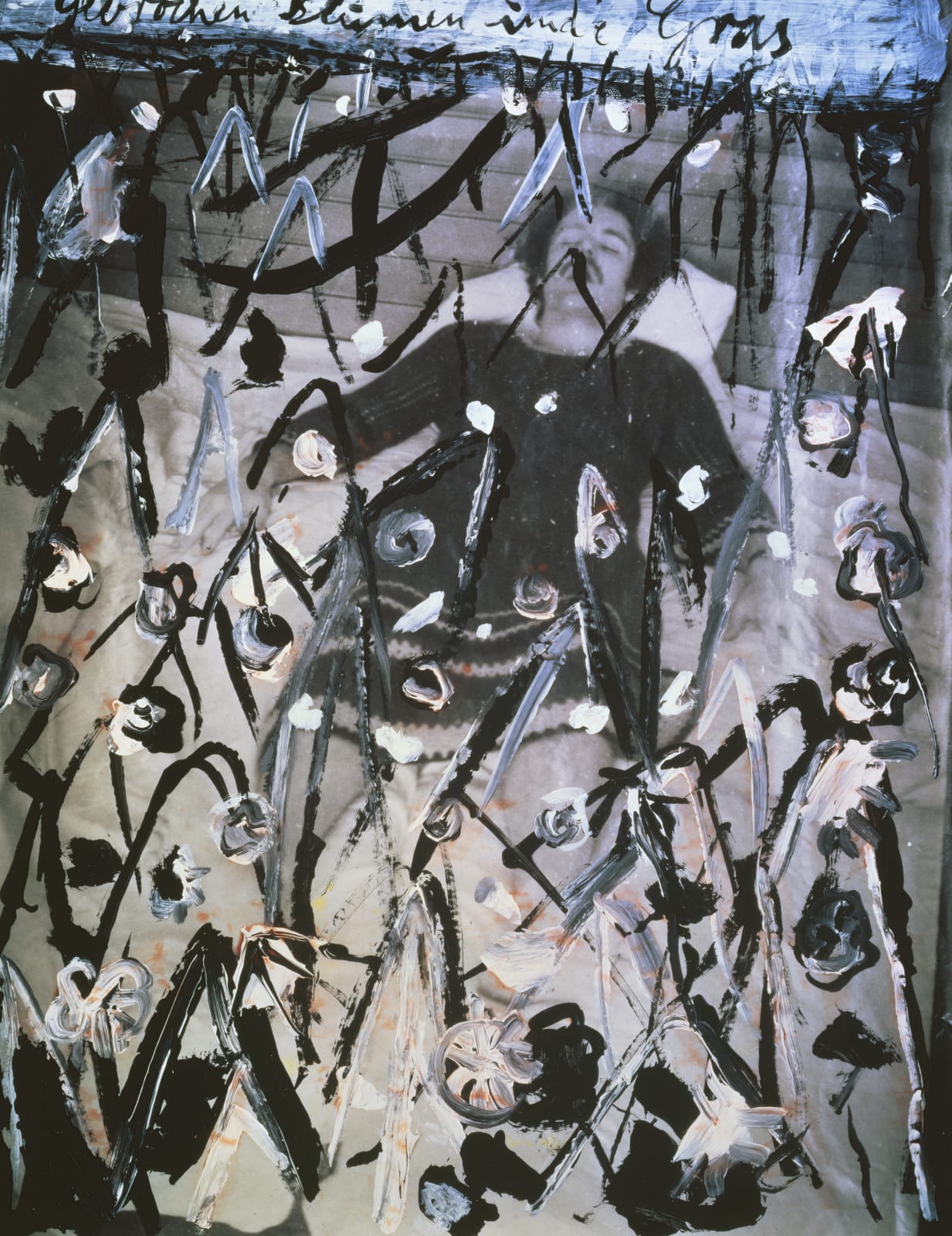On view at our Salzburg gallery and as an online viewing experience
The pictures were painted in Barjac, in the south of France [...] The grass, the entire vegetation was so dried out that the light yellow stalks and the withered thistles made for a whole variety of ochre and yellow shades which delighted me; which, in their beauty on the verge of decay, reminded me of the Grim Reaper, Eros and Thanatos. As I walked through the glowing fields, I kept thinking of Walther von der Vogelweide – his love-songs, his poems, so closely bound up with his life. — Anselm Kiefer
Anselm Kiefer explores beauty and destruction in a new series of monumental works that grew out of the artist’s walks through the Barjac landscape. The series’ creation is intimately connected to Kiefer’s thoughts about the greatest German lyric poet of the Middle Ages, Walther von der Vogelweide. Characteristic of Kiefer’s exploration of cultural memory and identity, these works are a culmination of his multi-layered iconography.
280 x 190 cm (110.24 x 74.8 in)
For me, poems are like buoys in an ocean. I swim from one to another, without them I am without direction, I am lost. — Anselm Kiefer
Anselm Kiefer’s depictions of nature explore the fundamental questions of human existence. This work references the medieval poet’s most famous song ‘Beneath the linden tree’, which recounts a romantic meeting of two lovers of different social standing in the countryside. The experience of nature and the broken blades of grass and flowers described in the poem are recurring elements in Anselm Kiefer's pictorial language.
280 x 380 x 15 cm (110.24 x 149.61 x 5.91 in)

The poem was originally written in Middle High German. I've always remembered these lines 'Under der Linden' ... at school we learned how the consonant shifts occurred over the centuries, how individual words changed over time. That was not very interesting to me at the time – it was too dry, too technical – but I was open to the sensual appeal of the poem. Walther von der Vogelweide wrote real love poems for the first time, not only the courtly ones.
Today, however, I am also interested in the history of language itself, because one can participate in the history of language, in history in general. By conquering what was once closed to me, history is now present for me. I can feel sustained in the history of my language.
It is not so important to know Walther von der Vogelweide's vita (which is rather poorly documented anyway), but I can put his poetry, especially without knowledge of his biography, into context – into my own context.
— Anselm Kiefer
(Photo: Anselm Kiefer)

Beneath the linden tree
Beneath the linden tree – upon the heath,
where we two made our bed – you still can find,
lovely together – the flowers and grass pressed down.
Beside the woodland in the vale – tandaradei,
sweetly sang the nightingale.
I came to meet him – in the fields.
My sweetheart was already there.
He greeted me – Heaven’s own Queen
and gave me joy for evermore.
Did he kiss me? oh, a thousand times!
tandaradei – see my lips, how red they are.
(Photo: Anselm Kiefer)
Anselm Kiefer captures a moving meadow landscape against a strip of wind-swept, pale horizon. Areas of pastose paint create a haptic, gestural surface. An abundance of blades of grass and bright shimmering flowers form a dense thicket that is accentuated by black stalks and seems as untouched as it is impenetrable.
280 x 380 cm (110,.24 x 149.61 in)
With this new series the artist returns to depictions of nature that have occupied him since earlier series such as Für Paul Celan, Die Ungeborenen and Morgenthau Plan. In these past series, Kiefer similarly evoke a symbolically charged experience of landscapes that harbour a deep interaction with cultural memory, identity or history.
190 x 280 cm (74.8 x 110.24 in)
For the past forty years, Anselm Kiefer has developed his practice through a process of material and symbolic accumulation, reworking key myths and motifs which recur across his paintings, sculptures, books, vitrines, and installations. The addition of the scythe enhances the symbolic content of the depiction and extends Kiefer's existing canon of materials to include another highly symbolic object. Following the principle of balance in Kiefer's work, the material weight of the scythe provides a necessary counterbalance to the spiritual or mystical content of the work. The sickle and the scythe symbolise that all the fruit that time produces is ultimately harvested; moreover, its curvature illustrates that all time circles back on itself.
Eros - Thanatos, 2019
Emulsion, oil paint, acrylic, shellac, gold leaf, wood and metal on canvas
280 x 380 cm (110.24 x 149.61 in)

About the artist
I always feel in conflict with my pictures, since I always have to wage war in my head between the world I’m supposed to be creating and the earth that closes itself against me. If I don’t accept that, then I run the risk of making affirmative products.
Anselm Kiefer lives and works between Paris and Barjac, France. The artist studied law, literature and linguistics before attending the Academy of Fine Arts in Karlsruhe, and later in Düsseldorf, where he was a student of Joseph Beuys.
Anselm Kiefer was selected for the West German Pavilion at the 39th Venice Biennale in 1980 and, more recently, his works have been shown in prominent solo exhibitions internationally, including Fondation Jan Michalski, Montricher (2019); Astrup Fearnley Museet, Oslo (2019); Met Breuer, New York (2018); Barnes Foundation, Philadelphia (2017); State Hermitage Museum, St. Petersburg (2017); Musée Rodin, Paris (2017); Albertina, Vienna (2016); Centre Georges Pompidou, Paris (2015); and Royal Academy of Arts, London (2014). In 2018, Anselm Kiefer's site-specific sculpture Uraeus was publicly exhibited in front of the Rockefeller Center in New York.
While many of his works can be interpreted in the context of fraught German identity in the post-war era, Anselm Kiefer’s preoccupation with myth and memorialisation encompasses the full sweep of human history. This is expressed not only thematically, but also on the level of form itself, through his treatment of materials and use of texture. The artist’s choice of highly symbolic materials includes lead, concrete, dried plants, glass, barbed wire, earth and other organic elements, alongside found objects. The dense tactility of his layered materials suggest the accumulations of history, year upon year, strata upon strata, with weathered surfaces that seem to reflect the ravages of passing time.

A comprehensive bilingual catalogue, published on the occasion of the exhibition, includes an essay by German writer Martin Mosebach and a conversation between Anselm Kiefer and Thaddaeus Ropac.
I live in language. [...] it’s language that dominates me. I listen to it. Much of it remains in the dark to me, but I carry the words with me and, now and then, I suddenly correlate with what is said to me. [...] Then, by way of an illumination, I arrive at the next darkness. I always expect the unexpected from language.
— Anselm Kiefer




